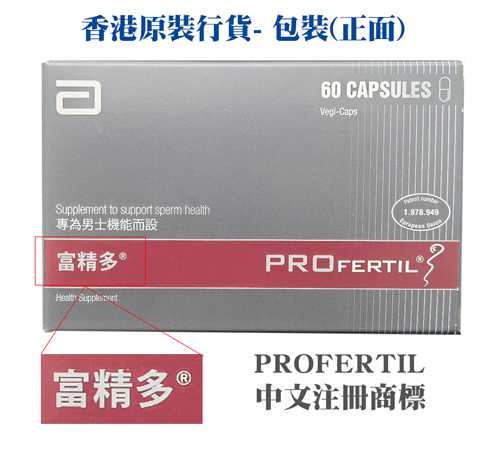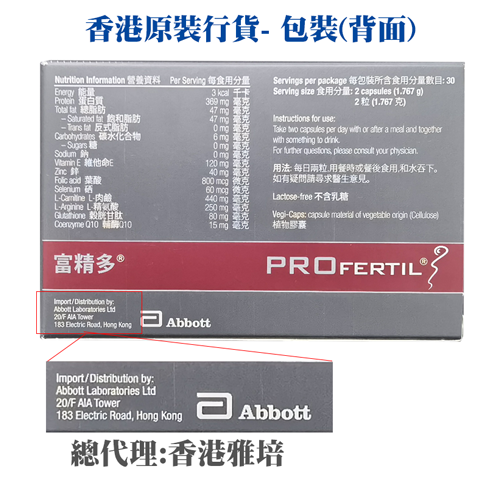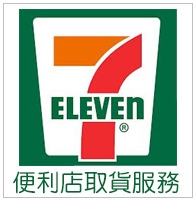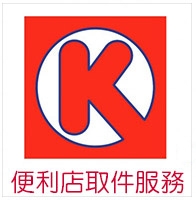商品目錄
Most popular


富精多 [原裝香港行貨]
專為男士機能而設
正常的男士機能對有生育計劃的伴侶十分重要。但調查顯示每6至7對夫婦之中,便有一對有相關的困難1。有研究估計相關問題約50%與有關男士有關2。
精子形成是十分複雜的過程,需時3個月。過程期間身體需要基本營養,例如維他命及其相關物質、微量元素、礦物質及氨基酸,以維持理想狀態支持精子各個階段的發展。對於有生育計劃的男士,最重要的是確保正常的男士機能和精子形成過程。由於維持正常的男士機能需要大量特定的營養素,定期補充相關養份將有利於精子形成。
富精多®是一種特別配製的營養補充劑,以鞏 固有生育計劃的男士之身體機能,及確保正常的精子形成過程。含有氨基酸、抗氧化物、維他命及礦物質, 能支持正常的男士機能及精子形成過程3。
科學家已對多種對精子形成過程重要的物質進行分析。並已刊登有關的研究結果。富精多®根據相關研究配制,其獨特配方已證實有效4-5,並已獲得多項專利保護。
各種營養素的特點
硒:維持正常的精子形成過程6-7
硒存在於精子中間部份的線粒體內,有結構方面以及酵素的作用,以維持精子的流動性及其尾部完整結構。正常的精子形成過程是男士機能的基本,亦是提高受精機會的先決條件。
鋅:鞏固男士機能8-10
鋅在男女士的身體機能都擔當重要角色。精子形成是一個依賴鋅的過程,而精液亦富含鋅。有正常的精子形成過程是計劃生育的先決條件。
葉酸:維持正常的氨基酸生成過程11-12
正常的氨基酸生成過程對精子質素十分重要。例如,身體內的L-肉鹼是由賴氨酸和甲硫氨酸組成的;穀胱甘肽是由穀胺酸、半胱氨酸和甘氨酸組成的。
維他命E和硒:保護細胞免受氧化壓力傷害13-14
活性氧(ROS)包括幾類自由基,是活躍的含氧化合物。它們是身體曝露於有害環境下(例如污染,輻射)而產生,容易與周邊環境發生反應。這些活躍的化合物如不及時被抗氧化物清除,便會破壞有機分子如DNA、蛋白質和脂肪。維他命E和硒是抗氧化物的例子,其他包括內生的或膳食攝取的抗氧化物、抗氧化酶和身體修復機制。於精液內,氧化壓力會使精子濃度和流動性降低。另外,氧化壓力可能會使精子內是DNA結構改變。
服用方法2
每日兩粒,用餐時或餐後和水吞服。最少使用3個月以使體內營養足以維持正常的精子形 成過程。但是,計劃生育期間亦可持續使用富精多®。
如有疑問可尋求醫生意見。
References:
- Templeton A. Infertility – epidemiology, aetiology and effective management. Health Bull (Edinb). 1995;53:294-8.
- Profertil® package insert
- Thonneau P et al. Incidence and main causes of infertility in a resident population (1,850,000) of three French regions (1988-1989). Hum Reprod 1991; 6:811.
- Lipovac M. Increased hyaluronan acid binding ability of spermatozoa indicating a better maturity, morphology, and higher DNA integrity after micronutrient supplement. European Medical Journal Urology. 2016 ;( 1):60-65.
- Imhof M. Improvement of sperm quality after micronutrient supplementation. e-SPEN Journal. 2012;7(1):e50-e53. doi:10.1016/j.eclnm.2011.11.002.
- Oldereid NB et al. Selenium in human male reproductive organs. Hum Reprod. 1998;13:2172-6.
- Scott R et al. The effect of oral selenium supplementation on human sperm motility. Br J Urol. 1998;82:76-80.
- Kvist U et al. Seminal fluid from men with agenesis of the Wolffian ducts: zinc-binding properties and effects on sperm chromatin stability. Int J Androl. 1990;13:245-52
- Omu AE et al. Treatment of asthenozoospermia with zinc sulphate: andrological, immunological and obstetric outcome. Eur J Obstet Gynecol Reprod Biol. 1998;79:179-84.
- Venkatesh S et al. Clinical significance of sperm DNA damage threshold value in the assessment of male infertility. Reprod Sci. 2011;18:1005-13.
- Wong WY et al. Male factor subfertility: possible causes and the impact of nutritional factors. Fertil Steril. 2000;73:435-42.
- Raijmakers MT et al. Glutathione and glutathione S-transferases A1-1 and P1-1 in seminal plasma may play a role in protecting against oxidative damage to spermatozoa. Fertil Steril. 2003;79: 169-72.
- Suleiman SA et al. Lipid peroxidation and human sperm motility: protective role of vitamin E. J Androl. 1996 Sep-Oct;17(5):530-7.
- Kessopoulou E et al. A double-blind randomized placebo cross-over controlled trial using the antioxidant vitamin E to treat reactive oxygen species associated male infertility. Fertil Steril. 1995;64:825-31.








